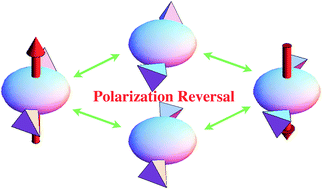Polarization reversal by intramolecular disordering in organic ferroelectrics: trichloroacetamide†
Abstract
Mechanism of successive ferroelectric–paraelectric phase transitions exhibited by an organic ferroelectric,

* Corresponding authors
a
Department of Chemistry, Graduate School of Pure and Applied Sciences, University of Tsukuba, Tsukuba, Ibaraki, Japan
E-mail:
kazuya@chem.tsukuba.ac.jp
b Condensed Matter Research Center, High Energy Accelerator Research Organization (KEK), Tsukuba, Ibaraki, Japan
c Department of Physics, Faculty of Education, Shimane University, Matsue, Shimane, Japan
Mechanism of successive ferroelectric–paraelectric phase transitions exhibited by an organic ferroelectric,

 Please wait while we load your content...
Something went wrong. Try again?
Please wait while we load your content...
Something went wrong. Try again?
K. Saito, Y. Yamamura, N. Kikuchi, A. Nakao, S. Yasuzuka, Y. Akishige and Y. Murakami, CrystEngComm, 2011, 13, 2693 DOI: 10.1039/C0CE00751J
To request permission to reproduce material from this article, please go to the Copyright Clearance Center request page.
If you are an author contributing to an RSC publication, you do not need to request permission provided correct acknowledgement is given.
If you are the author of this article, you do not need to request permission to reproduce figures and diagrams provided correct acknowledgement is given. If you want to reproduce the whole article in a third-party publication (excluding your thesis/dissertation for which permission is not required) please go to the Copyright Clearance Center request page.
Read more about how to correctly acknowledge RSC content.
 Fetching data from CrossRef.
Fetching data from CrossRef.
This may take some time to load.
Loading related content
